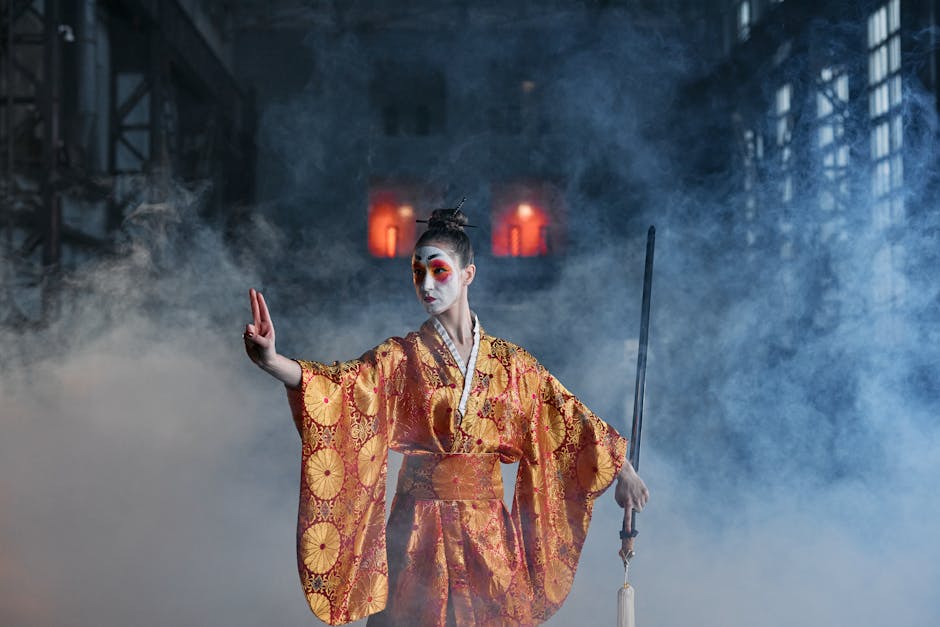In the world of martial arts, the Japanese Katana holds a revered place as a symbol of tradition, precision, and spiritual significance. From its historical roots to its modern-day impact, the Katana embodies both martial prowess and artistic beauty. Join us on a journey to explore the deep cultural importance of the Japanese Katana in the realm of martial arts.
Exploring the History and Evolution of the Japanese Katana
The history of the Japanese Katana is as storied as the warrior culture from which it emerged. Originating in the Muromachi period (1392–1573), the Katana evolved from earlier sword designs to become the iconic symbol of the samurai. Crafted through meticulous forging techniques, each Katana represented not just a weapon but a reflection of its wielder’s soul.
With the rise of the samurai class, the Katana transformed into a symbol of status, honor, and battlefield prowess. Its curved blade, renowned for its cutting ability and sharpness, became synonymous with the samurai code of bushido, emphasizing loyalty, self-discipline, and courage in the face of adversity.
During the peaceful Edo period (1603–1868), the Katana transcended its martial origins to embody aesthetic beauty and spiritual symbolism. Swordsmiths crafted blades that were not only deadly in combat but also masterpieces of art, reflecting the harmony between function and form that remains a hallmark of Japanese craftsmanship.
Even today, the legacy of the Japanese Katana continues to inspire awe and reverence, with modern practitioners of traditional martial arts paying homage to its timeless design and the values it represents.
The Mastery and Precision of Samurai Swordsmanship
Samurai swordsmanship, known as kenjutsu, goes beyond mere combat techniques to encapsulate a way of life governed by honor, loyalty, and discipline. The Katana serves as the extension of the samurai’s spirit, requiring not just physical skill but mental clarity and emotional control.
Training in the art of wielding the Katana was a holistic practice that honed the samurai’s mind, body, and spirit. Mastery of martial arts was inseparable from the development of one’s character, emphasizing virtues such as patience, respect, and the pursuit of excellence in all endeavors.
The relationship between a samurai and their Katana was deeply spiritual, with the sword often believed to house the warrior’s soul. Through rigorous training and meditation, samurai sought to achieve a state of oneness with their blade, enabling them to move with effortless precision and lethal intent in combat.
The legacy of samurai swordsmanship endures in modern martial arts practices, with practitioners learning not just the physical techniques of wielding the Katana but also the underlying principles of discipline, respect, and self-improvement.
Symbolism and Spiritual Significance in the Way of the Katana
Beyond its practical utility, the Japanese Katana embodies a rich tapestry of symbolism and spiritual significance in martial arts philosophy. The sword’s graceful curvature symbolizes the flow of energy and the interconnectedness of the material and spiritual realms.
In the hands of a skilled swordsman, the Katana becomes an instrument of harmony and balance, reflecting the unity of mind, body, and spirit in perfect alignment. Each strike, each parry, is a testament to the warrior’s mastery over themselves as much as their opponent.
The ritual of drawing and sheathing the Katana, known as iaido, is a meditative practice that emphasizes presence of mind and the readiness to act decisively when called upon. It is a form of moving meditation that cultivates focus, awareness, and the ability to respond fluidly to changing circumstances.
To wield the Katana is to embody centuries of tradition, honor, and discipline. It is a journey of self-discovery and self-mastery, a path that demands respect for the sword, for oneself, and for the profound teachings of the martial arts.
Honoring Tradition and Mastery
Reflecting on the Japanese Katana’s role in martial arts unveils a profound connection between the physical and the spiritual. Its legacy as a weapon of the samurai transcends time, reminding us of the discipline, skill, and symbolism enshrined within each blade. The Katana’s enduring allure serves as a testament to the enduring fascination with Japan’s rich martial heritage.

